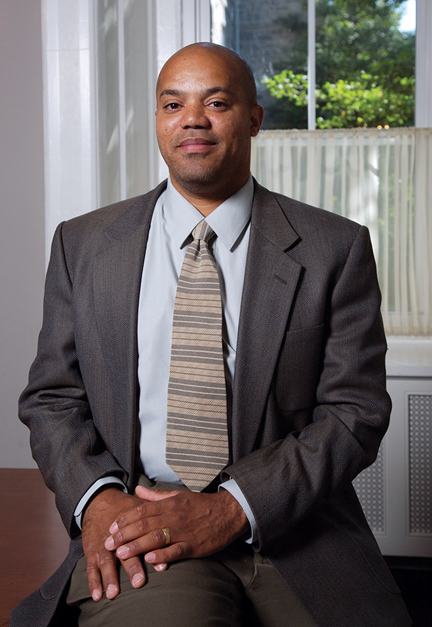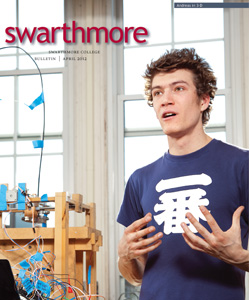Meeting the Challenges Ahead

Garikai Campbell ’90
In December, the Board of Managers approved a set of strategic directions for the College. This plan is the culmination of almost two years of conversation and analysis, which included extensive internal discussions as well as reviews of trends in higher education more generally. As we begin to implement these strategic directions, I would like to highlight a few of the challenges and opportunities that emerge from my perspective as a mathematics faculty member.
It seems appropriate to begin with shifts in the preparation of incoming students. Consider that over the last decade, the number of students taking five or more Advanced Placement (AP) exams has more than tripled. More students earned a 3 or higher on a science AP exam in 2010 than even took a science AP exam in 2001. However, that greater number of students in 2010 was 50 percent of the total test takers, down from 57 percent in 2001. We should not reduce the analysis of this phenomenon to a simple assessment of good versus bad preparation; these shifts are, in part, a reflection of the tension between the various modes of teaching that students experience—whether that mode is discovery and project-driven or lecture and content-driven. These are tensions that affect the extent to which breadth of knowledge is privileged or limited relative to depth of understanding, and lead to real differences in how students are prepared. It is more vital than ever that we support both students and faculty as they re-examine their learning and teaching, balancing rigorous critical thinking with exploration, play, and discovery.
Approaches to teaching and learning have already shifted in some significant ways. For more than 30 years, the National Science Foundation (NSF) has funded Research Experiences for Undergraduates, opportunities for undergraduates to engage in research, sometimes very advanced work, often over the summer and in small teams. Twenty years ago, the NSF funded about 50 such programs across the country. Ten years ago, it funded about 125 programs, and in 2010, almost 750.
This expansion reflects the growing acknowledgment that intense interaction beyond traditional classroom work is one of the more powerful ways to engage students. Access to intense, independent modes of learning, in all disciplines, not just in the sciences, has always been a distinctive strength of Swarthmore, but the need and desire to broaden such access has accelerated. Expanding the ways we connect students with not only research but other forms of creative, high-impact learning and work experiences will be a challenge, but one filled with exciting possibilities.
Equally important will be expanding the populations with whom we successfully connect. Note that, in 2008, women made up almost 57 percent of the undergraduate population nationally, yet represented fewer than 20 percent of the bachelor’s degrees awarded in engineering and computer science. There are similarly troubling national statistics regarding degree-attainment rates for minority and first-generation populations, in the sciences and more broadly. For these same groups, the enrollment growth is outpacing overall enrollment growth, in some cases substantially. Such outcomes should be intolerable at any moment but are particularly problematic given future demographics. It is imperative that we commit to becoming more successful with increasingly diverse populations.
Adding to these imperatives, we live in a tremendously fertile moment of intercommunication and collaboration. Seventy years ago, 90 percent of the mathematics papers catalogued by the American Mathematical Society’s Math Reviews were single authored. For more than a decade, the majority of papers have been co-authored, and the number of co-authors has been climbing. These data are again from the sciences, but a similar story can be told about almost any discipline. More than ever, we must think deeply about how we develop the ability to collaborate both within and across boundaries, to appreciate different practices and ways of thinking, and to bring our own perspectives and talents to the table. These are all directives a small, residential, liberal arts institution is perfectly suited to help students develop, and we should seize every opportunity to champion that point.
The challenges ahead are undeniably complex, but our strategic plan expresses a vision for how we can best meet those challenges. It has been extraordinarily rewarding to be so integrally connected to the process that produced this vision, and I look forward to seeing it realized.
Garikai Campbell ’90 is associate vice president for strategic planning and special assistant to the president, and associate professor of mathematics.
 Email This Page
Email This Page